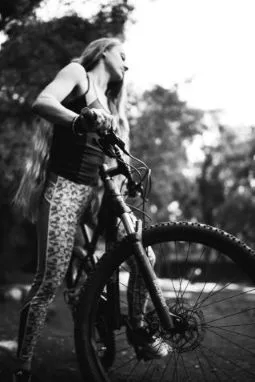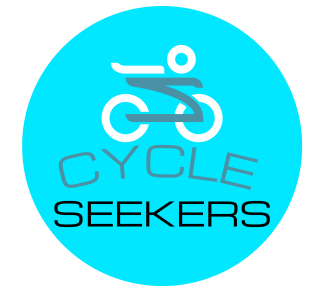Are you a woman looking to get into mountain biking or looking to trade up your bike? In today’s segment we’ll discuss themes in women’s mountain bikes.
First question; do you NEED a gender specific mountain bike? The short answer is a resounding NO, you don’t. You can also find what you’re after in so called “men’s bikes”. There are a growing number of products geared towards women that may fit your exact needs. You would’ve no doubt heard the term “shrink and pink” in reference to women’s cycling products. This refers to the tendency of some manufacturers to simply shrink the size, add bright colors, and call it a women’s bike. While this describes some models, it does not describe all. Some women’s products really are a better option depending on your preferences! As time goes by, manufacturers are focusing on more targeted improvements for women. Remember its always a good idea to conduct mechanical checks before any ride, regardless of gear.
The most important factors in identifying the best women’s mountain bike are as follows:
Frame
If you are between 5’2” and 5’6”, you’ll generally want a frame size that is 15-16”. For those between 5’6” and 5’10”, you’ll want a 17-18” frame and for 5’10”-6’1”, 19-20”. Women’s specific models historically were smaller, although this has been changing over the last few years. Women’s models are also beginning to account for a generally lower center of gravity irrespective of your chosen frame size, making these products even more targeted. As stated earlier, a “men’s model” that fits all the other criteria below and is produced at a size you’re after is still a good option.
Saddle
The best way to ensure proper saddle size is of course to do a fitting in a shop (trust me, your butt will thank you). The most common issue faced by women is an improperly small saddle size due to women’s generally larger sit bones. In mountain biking, the pain of an improperly sized saddle combined with far more bumps can make for a painful experience. This is one area where modern women’s specific products are more optimized for female riders.
Mechanics and Brakes
This is where your budget will really affect your experience. More expensive gearsets will ensure smoother shifting and possibly increase longevity, as well as non-plastic pedals. Most cheaper options come stock with rim brakes which are both less reliable and less powerful and will affect tire options. See our article on disc vs. caliper brakes to understand the tradeoffs in these braking options.
Bike Type
There are several bike types within mountain biking. Hardtail bikes are the usual recommendation for beginners, these are bikes with suspension only in the front which helps one get a better feel of the trail. Full suspension bikes are much smoother but also more expensive. I’d highly recommend starting with hardtail as it will make you a much better rider in the long term and avoid masking common issues that a full suspension bike might.
Appearance
This one is completely in the eye of the beholder. As discussed earlier, historically women’s mountain bikes offered smaller sizes and a smattering of pink and purple options. Thankfully, women’s models are increasingly focused on much more impactful differences (such as optimal saddle options, center of gravity considerations, and frame sizes) while also offering colors that appeal to everyone (and not just the stereotypical female ones).
In conclusion, paying attention to these 5 factors will help you choose a mountain bike that is optimal for you while helping you avoid common marketing pitfalls. Whatever your preferences, I promise there is a product out there perfect for you! PS I recommend our article on mountain bike slang to speak the lingo from the start. Please do shoot me an email if you have any more detailed questions and good luck out on the trail!


